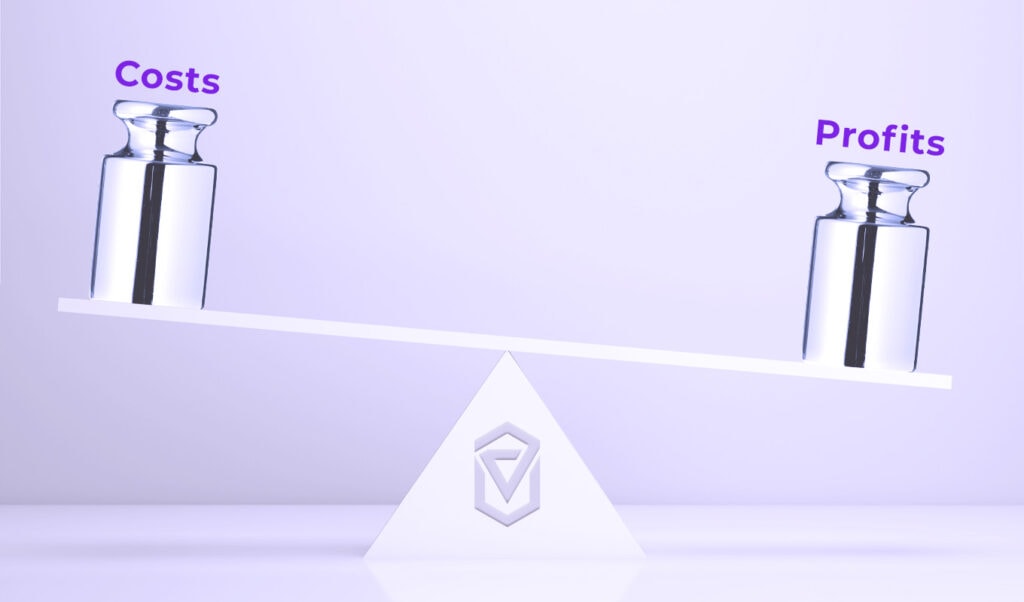Performance marketing is a lot of like teenage sex: everyone says they are doing it. But unlike sex, they are most likely telling the truth.
The thing with performance marketing is that it is not a separate domain, like digital and traditional, brand and affiliate. Whenever you looked at the results and made a decision based on your analysis, you were doing performance marketing.
But we would like you to give you a more complete idea of what performance marketing is, where it works best, and what strategies are used in performance marketing.
What is performance marketing?
Marketing is a huge term that contains more narrow categories that can still overlap with each other. Whenever someone talks about performance marketing, they usually do that in the context of digital marketing. The reason is that the digital world allows you to track various user actions and make data-driven decisions.
Try to measure the viewability of an outdoor banner.

Performance marketing is best viewed not as a separate branch of marketing but rather a strategy of focusing on delivering the desired results. These results are anything that a product owner may see as valuable, so:
- Sales
- App downloads
- Newsletter signups
Performance marketing usually applies to paid marketing. It is of course possible to get the results mentioned above with organic methods only: by promoting them on your blog or YouTube channel.
This, however, is hard to measure.
Performance marketing weights costs against profits. In paid advertising, costs are clear and easy to account for.
How does performance marketing work?
In performance marketing, you only pay for results. There are several ways of settling costs, called cost models, which are used by ad networks and marketers to deliver results:
- CPA (Cost per Action). In this cost model, a marketer pays a fixed price to an ad network only when a desired action occurs. This is an umbrella terms that is sometimes divided into more detailed cost models:
- CPI (Cost per Install) – used when you want to drive more app installs
- CPC (Cost per Click) – this cost model pays for each click on an ad.
- CPS (Cost per Sale) – this cost model is used when you want to get more sales
- CPL (Cost per Lead) – this is used when you want to get leads (contact information from visitors).
- Revenue share. In this cost model, a marketer pays a percentage of their revenue made when a specific action is completed (a sale, app install, etc.)
Now, let’s answer some questions you may have at this point.
-> Hey, that sounds a lot like affiliate marketing!
Technically, not a question. But it is still a valid point.
Some people, including experts, use these terms interchangeably. And for good reason. Both affiliate and performance marketing revolve around getting measurable results.
Affiliate marketing is specific. It is the type of advertising where you promote an offer of someone else’s product in exchange for a small commission paid upon delivering the desired result. It’s like you are a one-man (or woman) advertising agency that is being paid for the results they deliver.
And here’s the key to understanding performance marketing: affiliate marketing IS performance marketing if you apply the right approach.
If you focus on optimizing your funnels, measuring results, adjusting different variables – you are doing performance marketing, no matter if you advertise your own offer or a third-party one, like in affiliate marketing.
-> What channels can performance marketing use?
There are a number of places, in digital marketing called ‘channels’, that you can use to put your message visible to the public.
Let’s go over some of the most popular ones.
- Email marketing.
Although emails sound like something from the prehistoric era of the Internet, this type of marketing still works pretty well, especially for ecommerce marketers.
Sending messages to your subscribers or satisfied customers usually guarantees that your message will be read.
As for performance marketing, you can measure things like open rate and conversion rate on the most basic level. For the most sophisticated approach, you can use a CMS platform like Hubspot to deliver personalized messages to carefully selected groups of users for highest conversion rates.
- Display marketing.
Banners are almost an Internet tradition. A phenomenon called ‘banner blindness’ causes more seasoned Internet users to ignore obvious ads. However, new Internet users have not yet developed such a coping strategy. On top of that, there are plenty of more subtle ad formats, such as native ads that offer everything that banners lack: credibility and high open rates.
- Social media.
For the majority of people, social media is the Internet. Social platforms are the main place for getting information, keeping in touch with friends & family, and trading goods. A perfect place for an ad, even more so if you consider how many variables about visiting users these platforms track.
You have a lot of engagement metrics to put against a conversion rate. Social media is probably the most data-driven subset of digital marketing.
- Search engine marketing.
This approach uses the popularity of search engines to display context-relevant ads above organic search results.
Search ads allow you to tailor the performance of your campaigns according to keywords you target for and their variations. Search engines, similarly to social platforms, can provide a lot of customer-related data that should increase your conversion rates, if only it is interpreted correctly.
-> Is performance marketing only about measuring results?
Yes, performance marketing uses data to achieve measurable results. Marketers sometimes aim for other outcomes, not only sales or app installations. Big brands spend tons of money on brand recognition – something that is hard to measure and therefore lies outside the scope of a typical understanding of performance marketing.
-> How does performance marketing deliver its results?
Performance marketers use special tools: ad trackers, automation software, CMSs (customer management systems), social media trackers to optimize the way they handle their marketing efforts. These tools serve the following purposes:
- Record user-generated events, such as clicks, visits, ad impressions and conversions
- Present the recorded data in the form of reports and graphs to enable marketers to draw conclusions
- Create automated rules, perform A/B tests and redirect traffic to more profitable offers.
Performance marketing works by squeezing the most out of the margins – differences between payouts and costs. It’s a balance of earning more than spending. The key to it is understanding who has the highest chances of making a sale and which assets (ads, landing pages) generate the most results.

This is not something you can achieve by looking into an Excel file. Not with thousands of clicks occurring on various campaigns run in different countries to a diversified audience. This is a job for an ad tracker like Voluum – a tool that can handle live clicks, each one with its various characteristics like device type or browser version.
Ad trackers lately have become the center of the marketing universe. They went far beyond their primary goal of tracking and have become an all-in-one solution for performance marketers.
Voluum can not only record clicks using various methods that are not dependent on cookies and compliant with the requirements of various traffic sources, but also it enables in-depth analysis, bot protection and sophisticated automation.
Launch a performance marketing campaign
There are a few steps to follow in order to launch a performance marketing campaign:
- Set yourself a goal
Decide if you are aiming for getting 5,000 app installs or 10,000 leads. This decision will shape your future strategies and choices. Set yourself a budget and a timeframe.
- Select a marketing channel and ad format
Some ad formats work better for concrete product types. For example, native ads are great for more serious offers, as they draw credibility from their context. Push ads create a sense of urgency and are good for offers based on emotions (sweepstakes, iGaming, dating), while emails favor longer text sent to selected users.
- Prepare assets
Design several variations of creatives and landing pages. You will soon be able to test their performance on a real audience.
- Set up tracking and launch a campaign
Get an ad tracker such as Voluum and set up tracking in minutes. This will allow you to record user-generated data. Add all elements of your campaign funnel to Voluum, get a campaign URL and submit it to the ad network of your choice.
- Optimize your campaign
Wait a bit to gather some data, wait for the first conversions to appear or at least a day or two and look into what’s working. Select the best ad and landing page variations based on their performance. Pause unprofitable placements. Fine-tune your traffic targeting setting in your ad network.
Use Voluum’s Automizer to create auto-rules that will notify you when something bad happens with your campaign, for example: when traffic drops significantly in the last hour. Create rules that prevent overspending and that add good placements to a whitelist.
- Evaluate your outcome
See if you were able to meet your goals within a defined period of time. Draw conclusions for your future campaigns: save whitelists for later, see which parts of your traffic worked best. Note down your observations. Use this experience when creating the next campaign.
Performance marketing is marketing in its purest form
Performance marketing is a relatively new invention. Digital marketing has existed long before it. But the invention of performance marketing was the tipping point between half-amateurish work of enthusiasts and a professional industry employing experts and using advanced tools.
You don’t have a chance if you don’t follow the professional path. Gut feeling is ok, but it needs to be proven to be effective before you wage money on it.



